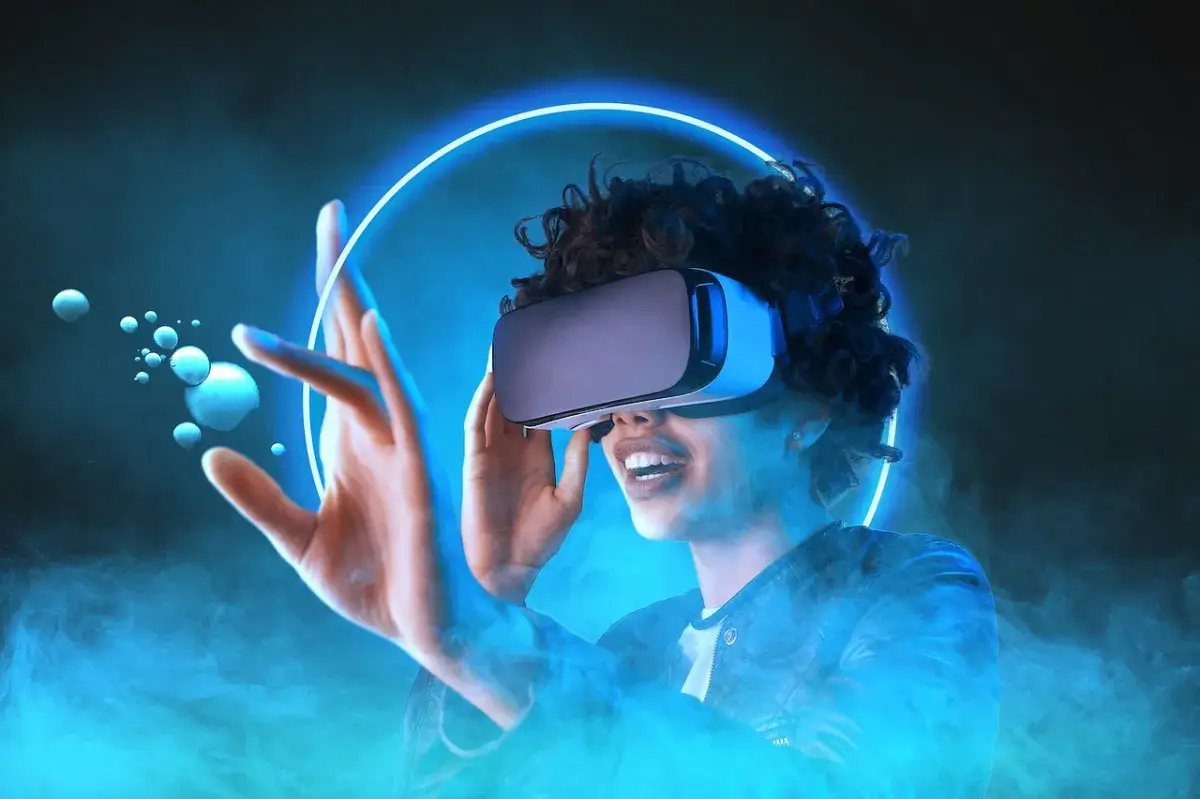The metaverse is experiencing a significant growth phase, fueled by the increasing maturity of augmented reality (AR) and virtual reality (VR) technologies. This convergence is ushering in a new era of immersive digital experiences, transforming how people interact, work, learn, and entertain themselves in the digital realm. The global metaverse market was valued at US$146.6 Billion in 2024 and is projected to reach US$1.1 Trillion by 2030, growing at a CAGR of 39.3% from 2024 to 2030.
Maturing AR/VR Technologies: The Core Drivers
Advancements in AR and VR technologies are the primary drivers behind the metaverse's expansion. These advancements enhance the quality and realism of virtual experiences, attracting a broader user base. Modern devices now support users in seamlessly switching between complete virtual environments and real-world overlays, unifying the user experience.
Several key technological improvements are contributing to this growth:
- Enhanced Hardware: Devices like Meta Quest and Apple's Vision Pro are pushing the boundaries of AR/VR technology. These devices boast better displays, improved computational power, artificial intelligence (AI) integration, and sleeker hardware designs, making them more user-friendly and less cumbersome. The focus in 2025 is on enhancing the user experience with smarter and more adaptable technologies, improving both usability and content.
- AI Integration: Integrating AI into AR and VR solutions has revolutionized the field, making these technologies smarter, more immersive, and easier to use. AI facilitates real-time object recognition and enhances virtual training simulations, enabling personalized learning experiences.
- 5G Connectivity: The rollout of 5G networks is a game-changer for AR and VR, providing the high bandwidth and low latency necessary for seamless and responsive metaverse experiences.
- Wearable AR/VR: Wearable AR/VR devices are evolving from bulky gadgets into sleek, practical tools that are easier to use and integrate into everyday life. New AR glasses with LTE capabilities could emerge as a smartphone alternative within three years.
Impact on Industries and Applications
The maturing AR/VR technologies are impacting various industries and applications within the metaverse:
- Gaming and Entertainment: The gaming industry is at the forefront of the metaverse revolution, with VR and AR technologies taking immersion to new heights. Games are becoming social platforms where players can create, share, and experience content together. The metaverse is redefining entertainment with immersive experiences, AI-driven personalization, and decentralized economies.
- Education and Training: VR and AR offer innovative educational tools within the metaverse, transforming how students learn. Virtual simulations and immersive experiences provide a deeper understanding of complex concepts, enabling students to visualize and interact with subjects more engagingly. Industries are leveraging AR/VR for training, diagnostics, and learning.
- Retail and E-commerce: AR applications enable virtual shopping experiences, allowing customers to try on virtual clothes or visualize how furniture would look in their homes. This enhances the customer experience and bridges the gap between online and offline shopping.
- Healthcare: The healthcare industry is undergoing significant transformations with AR and VR integration in the metaverse. Surgeons can utilize AR overlays during procedures, providing real-time guidance and enhancing precision. VR simulations can help medical professionals practice complex surgeries in a safe and controlled environment.
Challenges and Future Directions
Despite the rapid growth and advancements, the metaverse faces several challenges:
- Technological Hurdles: Improving hardware ergonomics, reducing latency issues for seamless interaction, and addressing cybersecurity and data privacy concerns remain significant challenges.
- Interoperability: The metaverse's success hinges on the widespread adoption of interoperable standards to enable seamless experiences across different platforms.
- Accessibility: Ensuring universal access to the metaverse and preventing the widening of the digital divide is crucial. High-speed internet and advanced hardware, such as VR headsets, may be beyond the reach of many.
Looking ahead, the metaverse promises a future where the lines between the physical and digital worlds blur even further. Advancements in AI, 5G, and blockchain technology will continue to drive innovation and create richer, more personalized experiences. As AR/VR technology progresses, collaboration among material scientists, optical engineers, and software developers may drive innovation. By 2025, advancements in materials, sustainable designs, and user-centered ergonomics could lead to AR/VR devices with improved immersion and integration into daily life.

















